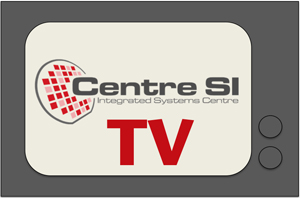Go to
Gianfranco Cerofolini
Nanoelectronic Circuits and Tools
14-18 July 2008, EPFL Auditorium CO3
Visiting Researcher
Department of Materials Science
University of Milano-Bicocca, 20125 Milano, Italy
Lecture 1: Friday, 18 July 2008 (10h00-11h00) CO3
Silicon in vivo-Linking the world of microelectronics to that of living systems
The worlds of microelectronics and biosystems have had very few, if any, common points. They indeed differ for materials (based on silicon rather than on carbon), information carriers (electron and holes rather than ions), length scales (0.1 μm rather than 10 μm), and time scales (10-8 s rather than 10-3 s).
It is thus not strange that for many years microelectronics has ignored biology, at most considering biosystems as a source of contamination for rinsing water in device processing. Recently, however, the exponential growth of microelectronics has allowed, at least in principle, the construction of complex electronic systems with comparable size to that of the biosystem unit-the cell. The availability of such systems is expected to be able to produce a shift of paradigm in medicine. Order-of-magnitude feasibility calculations indicate indeed that nano-robots (artificial machines with overall size on the order of a few micrometres or less in all spatial directions and constituted by nanoscopic components with individual dimensions in the interval 1-102 nm) are not physically impossible [1]. Their availability "will finally give physicians the most potent tools imaginable to conquer human disease, ill-health, and aging" [2].
The talk is addressed to speculate on the possibilities and difficulties of this new world-silicon in vivo.
[1] A. A. G. Requicha, "Nanorobots, NEMS, and Nanoassembly", Proc. IEEE 91, 1922-1933 (2003).
[2] R. A. Freitas, Jr., "Current Status of Nanomedicine and Medical Nanorobotics", J. Comput. Theor. Nanosci. 2, 1-25 (2005).
Lecture 2: Friday, 18 July 2008 (11h15-12h15) CO3
A roadmap to nanobiosensing
The continuous endeavor toward size reduction and circuit complexity is expected to meet serious fundamental, technological or economic difficulties in the next 10 years. Within the current technological paradigm, based on the complementary metal-oxide-semiconductor (CMOS) technology, the progress seems possible, but requires huge economic investments.
In their absence further progress seems still possible, but requires a shift of paradigm for both technology and circuit architecture. In particular, the crossbar architecture seems able to allow the production of circuits with bit density as high as 1011 cm-2, thus facing the tera scale integration (TSI). First objective of this talk is the detailed description of the major features of such a technology.
Not only would the availability of circuits with TSI complexity open new conventional markets (e.g., simultaneous translation), but also would be exploitable for the sensing of biological systems at the sub-cellular level. Nanobiosensing, however, is not trivial and its achievement will certainly require an effort comparable with that involved in the development of microelectronics or of molecular biology. However, this endeavour is made easier by the fact that next-generation devices can be seen as nothing but scaled-down evolution of the ones of the previous generation. If not defined yet, a roadmap for nanobiosensing can therefore be hypothesized, thus rendering the research in this area of interest for industry.
About the speaker:
Gianfranco Cerofolini (degree in Physics with honors from the University of Milan, 1970) is chief scientist in STMicroelectronics and visiting researcher at the University of Milano-Bicocca. His interests are currently addressed to the post-silicon technology, the physical limits of miniaturization, and the 'emergence' of higher-level phenomena from the underlying lower-level substrate (measurement in quantum mechanics, life in biological systems, etc.).
Although his research activity has been carried out in the industry (vacuum: SAES Getters, telecommunication: Telettra, chemistry and energetics: ENI, integrated circuits: STMicroelectronics), he has had frequent collaborations with academic centers (University of Lublin, IMEC, Stanford University, City College of New York, several Italian Universities) and has been lecturer in a few Universities (Pisa, Modena and Polytechnic of Milan).
His research has covered several areas: adsorption, biophysics, CMOS processing (oxidation, diffusion, ion implantation, gettering), electronic and optical materials, theory of acidity, and nanoelectronics.
The results of his activity have been published in approximately 300 articles, chapters to books, and encyclopedic items, and he has a score of patents.
Secondary navigation
- EPFL Workshop on Logic Synthesis and Emerging Technologies
- Luca Amaru
- Luca Benini
- Giovanni De Micheli
- Srini Devadas
- Antun Domic
- Rolf Drechsler
- Pierre-Emmanuel Gaillardon
- Jie-Hong Roland Jiang
- Akash Kumar
- Shahar Kvatinsky
- Yusuf Leblebici
- Shin-ichi Minato
- Alan Mishchenko
- Vijaykrishnan Narayanan
- Ian O'Connor
- Andre Inacio Reis
- Martin Roetteler
- Julien Ryckaert
- Mathias Soeken
- Christof Teuscher
- Zhiru Zhang
- Symposium on Emerging Trends in Computing
- Layout synthesis: A golden DA topic
- EPFL Workshop on Logic Synthesis & Verification
- Luca Amaru
- Luca Benini
- Robert Brayton
- Maciej Ciesielski
- Valentina Ciriani
- Jovanka Ciric-Vujkovic
- Jason Cong
- Jordi Cortadella
- Giovanni De Micheli
- Antun Domic
- Rolf Drechsler
- Henri Fraisse
- Paolo Ienne
- Viktor Kuncak
- Enrico Macii
- Igor Markov
- Steven M. Nowick
- Tsutomu Sasao
- Alena Simalatsar
- Leon Stok
- Dirk Stroobandt
- Tiziano Villa
- Symposium on Emerging Trends in Electronics
- Raul Camposano
- Anantha Chandrakasan
- Jo De Boeck
- Gerhard Fettweis
- Steve Furber
- Philippe Magarshack
- Takayasu Sakurai
- Alberto Sangiovanni-Vincentelli
- Ken Shepard
- VENUE
- Panel on Circuits in Emerging Nanotechnologies
- Panel on Emerging Methods of Computing
- Panel on The Role of Universities in the Emerging ICT World
- Panel on Design Challenges Ahead
- Panel on Alternative Use of Silicon
- Nano-Bio Technologies for Lab-on-Chip
- Functionality-Enhanced Devices Workshop
- More Moore: Designing Ultra-Complex System-on-Chips
- Design Technologies for a New Era
- Nanotechnology for Health
- Secure Systems Design
- Surface Treatments and Biochip Sensors
- Security/Privacy of IMDs
- Nanosystem Design and Variability
- Past Events Archive

